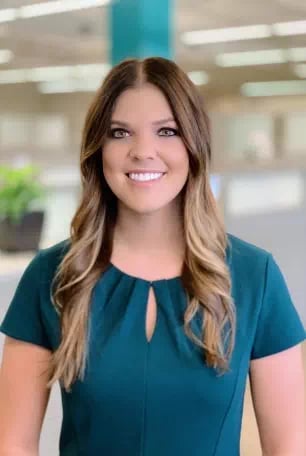Transition Planning for Retiring Physicians
%20(1).jpg)
For many physicians, retirement is more than just stepping away from their practice—it's a major life transition that requires careful financial, operational, and personal planning. Yet, despite its importance, many doctors delay transition planning, often overwhelmed by the complexity of the process or unsure of where to start.
The Growing Importance of Transition Planning
The healthcare landscape is experiencing significant demographic shifts that make transition planning increasingly critical:
- Patients aged 65+ account for 34% of physician demand, projected to reach 42% within a decade, requiring approximately 120,000 additional physicians
- More than 40% of active physicians in the U.S. will be 65 or older in the next decade, contributing to workforce shortages (AAMC).
- Physician transitions and practice sales are rising as small practices decline (61.4% to 51.8%) and large practices grow (12.2% to 18.3%) (American Medical Association).
Whether you're selling to a hospital, transitioning to a younger partner, or planning an internal succession plan, a well-thought-out plan ensures financial security, preserves patient care continuity, and protects the legacy of your practice.
Why Physicians Delay Transition Planning
Despite knowing they won’t practice forever, many physicians postpone transition planning for several reasons:
- Overwhelm: The process seems daunting, and they’re unsure where to begin.
- Daily Demands: Running a practice is time-consuming, making long-term planning difficult.
- Financial Uncertainty: Concerns about compensation reduction when bringing in a successor.
- Emotional Attachment: Letting go of a practice they built can be challenging.
- Lack of Awareness: Many don’t realize the benefits of early exit planning.
Yet, failing to plan can lead to financial instability, rushed decisions, and missed opportunities to maximize the value of a practice.
Key Components of a Successful Transition Plan
A strong transition plan consists of four essential elements:
- Maximizing Practice Value
- Ensuring Personal Financial Readiness
- Risk Management & Contingency Planning
- Planning for Life After Medicine
Let’s break down each area in detail.
1. Maximizing the Value of Your Practice
Your practice isn’t just a workplace—it’s a financial asset. Whether you plan to sell it or pass it on, optimizing its value is crucial.
Evaluating Exit Strategies
Each transition option comes with its own pros and cons:
- Hospital Acquisition: Provides financial stability and removes administrative burdens but may alter practice culture.
- Sale to a Younger Partner: Preserves patient relationships and continuity but requires a structured buy-in process.
- Merger with Another Practice: Expands resources and operational efficiencies but may involve complex negotiations.
- Wind Down & Close: An option if no buyers are available, but often the least financially advantageous.
Boosting Practice Valuation
A practice’s value depends on several factors, including:
- Financial Health: Strong revenue, diverse income streams, and stable patient volume.
- Operational Efficiency: Updated technology, effective billing systems, and well-documented processes.
- Patient & Staff Retention: Long-term patient relationships and experienced staff increase appeal to buyers.
- Legal & Compliance Readiness: Ensuring contracts, licenses, and regulatory requirements are in place.
Most transitions take 3-5 years, so starting early allows time to improve these areas.
2. Personal Financial Readiness
Your practice is just one part of your retirement picture. Ensuring personal financial security post-transition is key.
Understanding Your Financial Needs
- Income Replacement: How will you replace your current salary after exiting?
- Tax Considerations: Will the sale of your practice trigger significant tax liabilities?
- Investment & Retirement Accounts: Are your savings diversified beyond your practice assets?
- Healthcare & Insurance: If retiring before Medicare eligibility, what are your coverage options?
Tax-Efficient Transition Planning
Selling your practice involves capital gains taxes, income taxes, and potential estate taxes. The structure of the sale (asset sale vs. stock sale) impacts your tax liability. Asset sales generally favor buyers, while stock sales typically benefit sellers from a tax perspective. Current capital gains rates (0%, 15%, or 20% depending on income level) plus the potential Net Investment Income Tax (NIIT) of 3.8% make tax planning crucial for maximizing after-tax proceeds.
3. Risk Management &Contingency Planning
Approximately 50% of business exits are not voluntary. The "5 D's" (Death, Disability, Disagreement, Divorce, or Distress) can force an unplanned transition. Proper contingency planning is essential to protect both your family and your practice. Here are key protection strategies to consider implementing:
Solo Practitioners:
- Life and Disability Insurance: Personal coverage ensures your family's financial security
- Key Person Insurance: Compensates the practice for lost revenue if you become unable to practice
- Business Overhead Expense Coverage: Covers ongoing practice expenses during a disability
- Estate Planning Documents: Updated wills, trusts, and powers of attorney to manage practice assets
Group Practices:
- Buy/Sell Agreements: Legally binding contracts that outline:
- What happens if an owner dies, becomes disabled, or wants to exit
- How practice value will be determined
- Payment terms for the departing physician's share
- Funding mechanisms (typically insurance) to ensure financial capability
Insurance Considerations for Practice Protection:
- Buy/Sell Coverage: Funds the purchase of a deceased or disabled owner's interest
- Key Person Coverage: Indemnifies the business for lost profits from the loss of essential personnel
- Professional Liability: Protects against malpractice claims
- Employment Practices Liability: Guards against staff-related legal issues
- Cyber Insurance: Critical for practices with electronic health records
- Business Interruption: Maintains income during operational disruptions
Other Protective Measures:
- Prenuptial Agreements: Can protect practice ownership from divorce settlements
- Asset Diversification: Building wealth outside the practice provides flexibility
- Partnership Agreements: Should include detailed dispute resolution processes
4. Life After Medicine
Many physicians struggle with the question: What will I do after I retire? Planning for life post-practice ensures a smoother transition.
Exploring Post-Retirement Opportunities
Some physicians transition into part-time consulting, medical directorships, or teaching roles. Others dedicate time to philanthropy, mentorship, or personal passions. Having a vision for this next stage can ease the psychological shift away from daily practice.
Avoiding the “Sudden Stop” Syndrome
Going from a high-intensity medical career to an abrupt retirement can be jarring. A phased approach—gradually reducing work hours or shifting into non-clinical roles—can create a more seamless adjustment.
Common Pitfalls to Avoid
Physicians who delay or neglect transition planning often encounter significant challenges. Here are some common missteps to watch out for:
- Not Having a Buy-Sell Agreement: This contract is essential for partnerships to define transition terms.
- Ignoring Contingency Planning: Life events (death, disability, divorce, disputes) can disrupt transition timelines.
- Failing to Engage Professional Advisors: Attorneys, CPAs, and financial planners help navigate complex financial and legal considerations.
- Overlooking Patient & Staff Communication: A transparent transition plan reassures both employees and patients.
Getting Started
Transition planning doesn’t have to be overwhelming. Begin with these actionable steps:
- Set a Retirement Timeline: Determine your ideal exit date and work backward.
- Assess Your Practice’s Value: Get a professional valuation to understand your financial standing.
- Build a Financial Plan: Work with an advisor to ensure personal readiness.
- Identify Potential Successors or Buyers: If internal succession is an option, start mentoring candidates early.
- Create a Patient & Staff Communication Strategy: Ensure a smooth handoff of responsibilities.
Planning for retirement is more than just an exit strategy—it’s about securing your financial future, protecting the continuity of your practice, and ensuring a smooth transition for patients and staff. By taking proactive steps today, you can design a retirement that aligns with both your personal and professional goals.
Start Planning with Lutz
For physicians seeking expert guidance, Lutz offers tailored healthcare transition planning services to help you navigate this process with confidence. Contact us to start building your personalized transition strategy today.

- Responsibility, Discipline, Maximizer, Harmony, Achiever
Lauren Duren
Lauren Duren, Client Advisory Services & Healthcare Director, began her career in 2012. Since she started as an intern with Lutz, she has developed comprehensive expertise in healthcare accounting and consulting while serving as the private practice department leader and contributing to the CAS policy committee.
Leveraging her experience in outsourced accounting and advisory services, Lauren focuses on independent medical practices. She provides strategic solutions, including provider compensation, revenue cycle optimization, and practice transition planning. Lauren values helping clients think through complex challenges to drive meaningful business improvements and develop strategies for long-term sustainability.
At Lutz, Lauren's discipline and focus enable her to deliver exceptional results in the healthcare sector. Her methodical approach to complex projects, combined with her commitment to quality technical support, has been instrumental in expanding specialized services for medical practices. Passionate about developing the next generation of talent at Lutz, Lauren also dedicates significant time to mentoring and training staff.
Lauren lives in Omaha, NE, with her husband Dylan, daughter Lilly, and their dog Blakely. Outside the office, she can be found spending time with friends and family, attending concerts, reading, cooking, and staying active through yoga and cycling.
Recent News & Insights
3 Tips to Improve the Tax Efficiency of Your Portfolio
Lutz adds Jacobus and Nelson
Leveraging Market Analysis Reports for Successful Sell-Side M&A Transactions
10 Cybersecurity Strategies for Healthcare Practices



.jpg?width=300&height=175&name=Mega%20Menu%20Image%20(1).jpg)
%20(1).jpg?width=300&height=175&name=Mega%20Menu%20Image%20(2)%20(1).jpg)
%20(1)-Mar-08-2024-09-27-14-7268-PM.jpg?width=300&height=175&name=Untitled%20design%20(6)%20(1)-Mar-08-2024-09-27-14-7268-PM.jpg)

%20(1)-Mar-08-2024-09-11-30-0067-PM.jpg?width=300&height=175&name=Untitled%20design%20(3)%20(1)-Mar-08-2024-09-11-30-0067-PM.jpg)
%20(1).jpg?width=300&height=175&name=Mega%20Menu%20Image%20(3)%20(1).jpg)
%20(1).jpg?width=300&height=175&name=Mega%20Menu%20Image%20(4)%20(1).jpg)
%20(1).jpg?width=300&height=175&name=Mega%20Menu%20Image%20(5)%20(1).jpg)
-Mar-08-2024-08-50-35-9527-PM.png?width=300&height=175&name=Untitled%20design%20(1)-Mar-08-2024-08-50-35-9527-PM.png)


.jpg)




